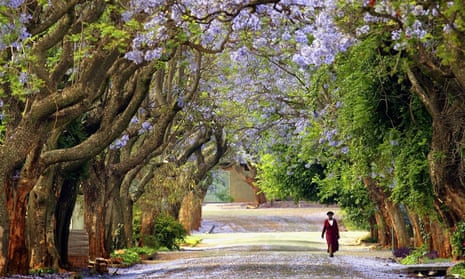Residents report feeling better and having fewer health problems when there are more trees on their street, a new study has found.
An online health survey of 31,109 residents living in the Canadian city of Toronto was combined with high-resolution satellite imagery and tree data. The research was published in Scientific Reports on Thursday.
Having on average 10 more trees in a city block improved how someone rated their health by a level comparable to an increase in annual personal income of $10,000, moving to a neighbourhood with $10,000 higher median income, or being seven years younger.
A similar effect was found in reporting health problems such as hypertension, high blood glucose, obesity, with equivalent to a $20,200 income increase or being 1.4 years younger.
The paper’s lead author, Omid Kardan of the University of Chicago, said the experiment had been controlled for factors that could affect health, such as age, family income, education and diet.
Despite the assumption a more affluent family would be healthier, “it seems living in a greener area can compensate,” Kardan said.
Residents were also surveyed on mental health problems including depression, anxiety and addiction, and other conditions such as cancer, migraines, arthritis, or asthma. However, any link to green spaces was inconclusive, Kardan said.
While the study does not make clear whether what, if any, direct impact trees have on human health – or whether the link is merely correlational – Kardan said in real life “most things happen both ways”.
“For example, in our case you might say trees reduce air pollution, relieve stress and promote more physical exercise. Through those mechanisms maybe these people get healthier.
“Or probably as these healthier people, compared to others with the same amount of money and everything, chose to live in a greener area. So it’s probably a combination of both.”
The study’s executive scientific director Lyle Palmer said the findings had important lessons for Australia, which is “the most urbanised population on the planet”.
“The environment we live in has a big impact on our perception of wellbeing, but also objectively on our health outcomes,” he said. “We have to take that information into account when conducting urban planning.”
Generally cities “haven’t done a good job” with building in green spaces, Palmer said. And with Australia’s current drive towards high-density, inner city housing combined with an obesity epidemic, green spaces offer a “cheap, long-term intervention”.
In a 2014 UTS analysis of Australia’s urban tree canopy cover, Melbourne (13%) and Sydney (15%) performed poorly against other capital cities such as Hobart (59%).

Comments (…)
Sign in or create your Guardian account to join the discussion